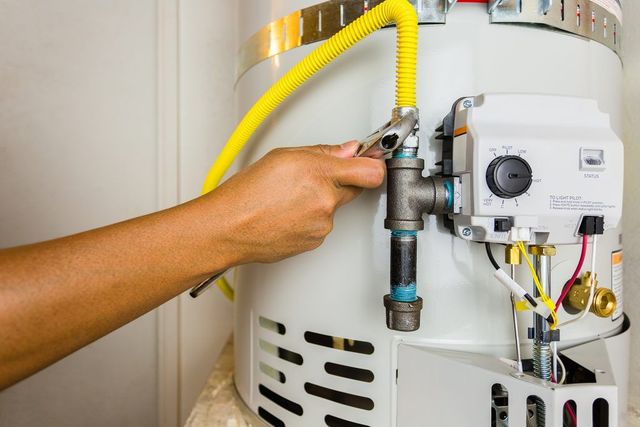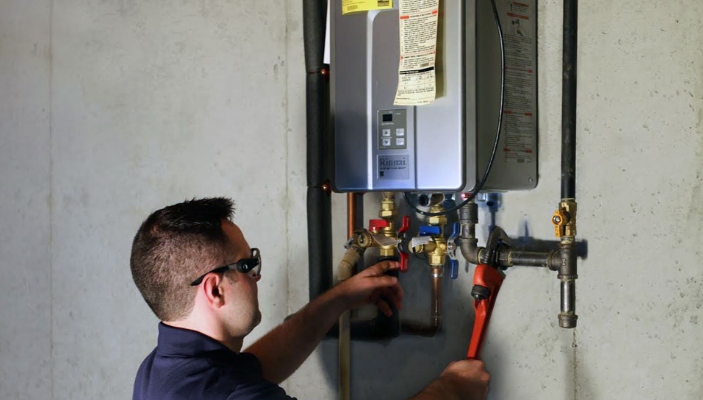Effective Techniques for Caring for Your Home's Hot Water SystemSimple Ways to Care for Your Home's Hot Water System Effectively
Effective Techniques for Caring for Your Home's Hot Water SystemSimple Ways to Care for Your Home's Hot Water System Effectively
Blog Article
This post which follows relating to How to Maintain Your Water Heater & Prolong its Life is truly compelling. Give it a try and draw your own personal final thoughts.

Warm water is necessary for daily convenience, whether it's for a refreshing shower or washing meals. To guarantee your hot water system runs effectively and lasts much longer, routine upkeep is key. This post gives useful ideas and understandings on how to preserve your home's warm water system to stay clear of interruptions and expensive fixings.
Intro
Maintaining your home's warm water system could seem difficult, but with a few basic actions, you can guarantee it operates smoothly for many years ahead. This overview covers every little thing from understanding your hot water system to do it yourself upkeep tips and knowing when to hire expert assistance.
Relevance of Maintaining Your Hot Water System
Routine upkeep not just expands the lifespan of your hot water system but likewise ensures it operates successfully. Neglecting upkeep can lead to lowered efficiency, greater power bills, and also early failure of the system.
Indications Your Hot Water System Requirements Upkeep
Understanding when your hot water system needs interest can protect against significant issues. Watch out for indications such as inconsistent water temperature, unusual noises from the heating unit, or rustic water.
Comprehending Your Hot Water System
Before diving into upkeep tasks, it's practical to comprehend the basic components of your hot water system. Usually, this includes the water heater itself, pipes, anode poles, and temperature level controls.
Monthly Upkeep Tasks
Normal month-to-month checks can assist catch minor issues prior to they intensify.
Flushing the Water Heater
Flushing your hot water heater gets rid of debris build-up, improving effectiveness and prolonging its life.
Checking and Replacing Anode Rods
Anode poles protect against rust inside the storage tank. Evaluating and changing them when worn is vital.
Checking and Changing Temperature Settings
Readjusting the temperature level setups guarantees optimum performance and safety.
Do It Yourself Tips for Maintenance
You can perform several upkeep tasks yourself to keep your warm water system in leading condition.
Looking for Leaks
Routinely inspect pipelines and connections for leakages, as these can cause water damages and greater bills.
Testing Pressure Relief Valves
Evaluating the pressure safety valve guarantees it functions appropriately and stops excessive stress accumulation.
Insulating Pipelines
Shielding hot water pipelines minimizes heat loss and can conserve energy.
When to Call a Professional
While DIY upkeep is helpful, some concerns need professional experience.
Complex Problems Requiring Expert Help
Examples consist of major leakages, electrical troubles, or if your water heater is consistently underperforming.
Routine Specialist Maintenance Conveniences
Professional upkeep can include extensive assessments, tune-ups, and making sure conformity with safety requirements.
Verdict
Normal maintenance of your home's hot water system is important for efficiency, long life, and cost financial savings. By adhering to these suggestions and recognizing when to seek expert aid, you can ensure a reliable supply of warm water without unexpected disruptions.
Water Heater Maintenance: The Basics
Maintaining your water heater will ensure it operates efficiently and has a longer lifespan. Neglecting regular maintenance can lead to costly repairs and an even bigger chunk of your savings if you have to replace it sooner than necessary. But there’s good news: Most water heater maintenance tasks are relatively simple and easy for homeowners with basic DIY skills.
Flush the Water Heater
Over time, sediment and minerals can build up in the tank, reducing its efficiency and potentially causing damage. To flush the tank, turn off the power or gas supply, attach a hose to the drain valve near the bottom and open the valve to drain the water until it runs clear. Ideally, flush the tank annually.
Replace the Anode Rod
The anode rod is a sacrificial metal rod that helps prevent corrosion inside the tank. Inspect and replace it every three to five years or per the manufacturer's recommendation. To replace the anode rod, turn off the power or gas supply, drain a few gallons of water from the tank, unscrew the old rod and replace it with a new one. If the anode rod is significantly corroded or covered in calcium buildup, it's a sign the water heater may need to be replaced soon.
Tune-Up
A yearly tune-up can help identify potential issues and ensure your water heater operates at peak efficiency. This typically involves checking the thermostat, burner assembly (for gas heaters) and any other components specified by the manufacturer. During a tune-up, the technician may also clean the burner and adjust the pilot light (for gas heaters) or examine the heating elements (for electric heaters).
How to Maintain Your Water Heater
Insulate the tank. Insulating the tank can improve energy efficiency and reduce heat loss, saving you money on energy bills. You can purchase precut insulation blankets designed specifically for water heaters or use standard fiberglass insulation wrapped securely around the tank. Check the temperature. The recommended water temperature for most households is around 120 degrees Fahrenheit (49 degrees Celsius). Higher temperatures can increase energy costs and potentially cause scalding. Use a kitchen thermometer to check the temperature at the faucet nearest the water heater. Monitor water pressure. Excessive water pressure can strain the water heater and cause leaks or even tank failure. Install a pressure-reducing valve if necessary. The ideal water pressure range is between 60 and 70 PSI (pounds per square inch). Test the temperature and pressure (T&P) relief valve. The T&P relief valve is a safety feature that releases pressure if the tank gets too hot or the pressure builds up too high. Test it annually by lifting the lever and allowing a small amount of water to release. Replace the valve if it doesn't release water or reseal properly. Check for leaks. Regularly inspect the tank, pipes and fittings for leaks or corrosion. Deal with issues promptly to prevent further damage. Even a small leak can lead to significant water damage over time. Consider a tankless water heater. If your traditional tank-style water heater is nearing the end of its lifespan ( typically 10 years), consider replacing it with a tankless water heater. These units heat water on demand, reducing standby energy losses and potentially saving you money on your energy bills. Schedule professional maintenance. While homeowners can perform many water heater maintenance tasks, it's still a good idea to schedule professional maintenance every few years. A plumber or HVAC technician can thoroughly inspect the unit, identify potential issues and ensure it operates safely and efficiently. https://www.homeserve.com/en-us/blog/home-improvement/hot-water-heater-maintanence/

I recently found that page on How to Maintain a Hot Water Heater in a Few Simple Steps when doing a lookup on the search engines. Do you know about someone else who is interested in the subject? Why not promote it. We recognize the value of reading our article about Water Heater Maintenance Tips You Can't Afford to Forget.
Hire A Pro Report this page